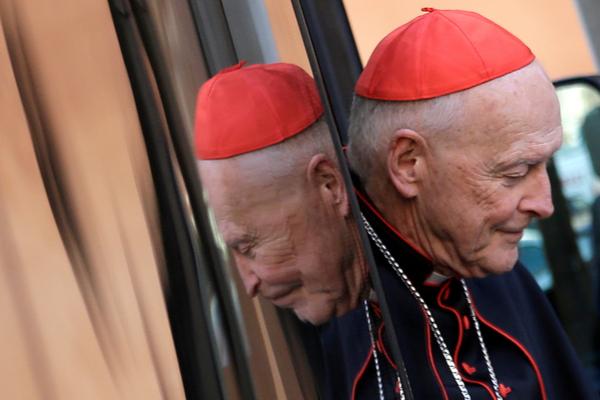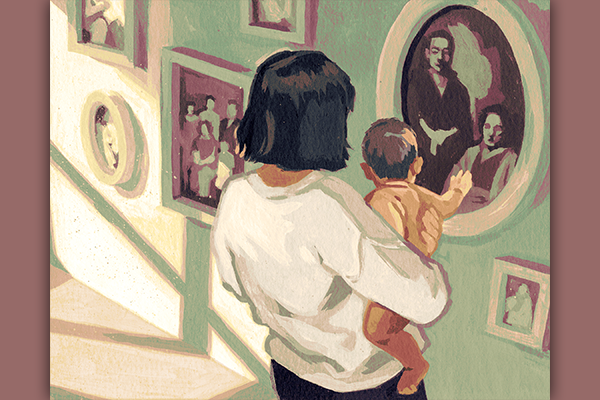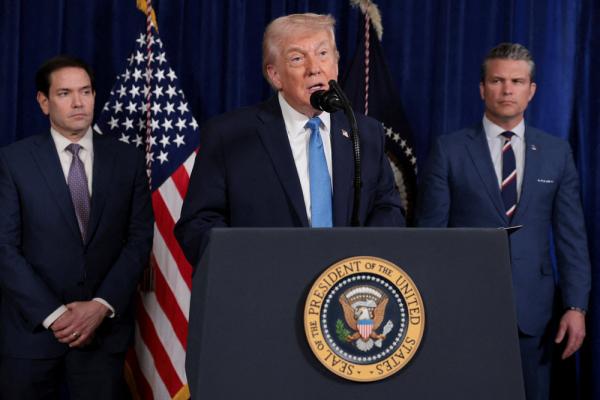On the same day last week, two reports on sexual abuse in the Catholic Church made headlines.
The first report, released by the Vatican, is the so-called “McCarrick report.” It documents the rise of former (now-laicized, or removed from priestly office) Cardinal Theodore McCarrick to the highest levels of the Catholic Church, despite persistent warnings that he had sexually entrapped seminarians for decades and then abused his significant power and finances to buy silence. (The now-90-year-old McCarrick, the most senior church official ever laicized for sexual abuse, lives in an undisclosed location in the U.S.)
The second report was released by an independent commission in the U.K. It documents nearly 50 years of sexual abuse of minors by Catholic institutions in England and Wales and how Cardinal Vincent Nichols, current president of Catholic Bishops’ Conference of England and Wales, consistently elevated protection of his own reputation over that of the children in the care of church workers — priests, brothers, and lay leaders.
What the reports have in common is long lists of sexual abuse victims and their broken families. The testimonies of survivors are instructive for the quality of their demand for justice and yet, to paraphrase Tolstoy, each unhappy survivor story “is unhappy in its own way.” Each story is unbearable in its details of the physical and psycho-spiritual torture and the chronic wounds that remain.
But in other respects, the two reports could not be more different.
The U.K. report is the result of a five-year inquiry written by an independent commission to investigate child sexual abuse in England and Wales, including abuse that occurred within the Roman Catholic Church, other religious communities, and other state and non-state institutions. The report on the Roman Catholic Church found that more than 3,000 complaints of sexual abuse involving 900 perpetrators were made between 1970 and 2015 — and that more than 100 allegations a year have continued since then.
The commission spares no criticism for the leadership of Cardinal Nichols, whose job it was to implement effective safeguards based on previous recommendations. The commission also directly indicts the Pontifical Commission for the Protection of Minors, established by Pope Francis in 2014, citing as of grave concern one of the commission’s founding members who resigned due to an “unacceptable” resistance by agencies in the Vatican to implement proposals approved by the pope. It takes a “victims-first” approach and concludes with seven clear, specific recommendations.
On the other hand, the McCarrick report is the result of a two-year internal investigation conducted by the Vatican on its own “prince of the church.” In roughly 450 pages, the document reveals that multiple bishops, cardinals, church officials, and popes ignored, downplayed, dismissed, bungled, or otherwise colluded to bury numerous reports of sexual misconduct by McCarrick, former cardinal archbishop of Washington, D.C., and one of the highest ranking, most visible Roman Catholic officials in the U.S., who also traveled the world serving as a diplomatic liaison with presidents and an ambassador for Church charities.
The Vatican identifies three American bishops — James McHugh, Edward Hughes, and John M. Smith — who provided inaccurate and incomplete information regarding McCarrick’s sexual predation on young men. It also lays blame for the failure to thoroughly investigate McCarrick at the feet of Pope John Paul II, who was canonized in 2014.
For some, the McCarrick report not only outlines the corrupt clerical culture in church hierarchy, but once again shines a spotlight on the institutional failure of U.S. seminaries. In a New York Times column, Elizabeth Bruenig wrote, “Sexual abuse in Catholic seminaries has been well known since at least 1983 ... The Catholic seminary system is long overdue for a thorough, independent investigation into these disturbing patterns.”
On Monday, the biannual general assembly of U.S. Conference of Bishops — of which McCarrick was a member from 1977 until 2019 — briefly discussed the report. Archbishop William Lori of Baltimore invited prayer and fasting because in that state “the problems described in the McCarrick report cease to be merely structural problems, not a problem ‘out there’ to be solved by other people, but rather where we begin to take some personal responsibility for what has happened in the life of the church.” Bishop Michael Olson of Fort Worth, Texas, called for financial transparency and noted that McCarrick’s financial misconduct to cover up his sexual abuse was not part of the report.
The Vatican’s investigation into its own systemic failure was intended to organize the facts of McCarrick’s ecclesial rise amid credible allegations of abuse. It was not intended to lay out recommendations for reform — and it does not. However, the layer of culpability in the McCarrick report is spread so thin that no one need take actual responsibility except McCarrick himself. And McCarrick — now dismissed from the clerical state — is no longer the Church’s responsibility.
What do we make of these new reports, two more in the long line of 30 years of such reports?
When things go wrong in high-profile cases, like McCarrick’s, individuals are often assumed to be at fault. But these reports reiterate the problem is not a “few bad apples” nor organizational bungling; the system itself is actually the problem.
William Tate at the Institute for Systemic Leadership uses a fish tank analogy. Instead of simply observing the “fish,” one must also notice the quality of the water. If the water is toxic, the fish will suffer.
Both reports released last week reveal water made toxic by clericalism, or the misuse, overreach, or outright idolatry of clergy’s authority. This leads to abuse of power, which leads to religious violence, sometimes in the form of sexual abuse, but most often in the form of spiritual and moral domination of women, laity, children, and other vulnerable or dependent adults. “Clericalism is our ugliest perversion,” Pope Francis told seminarians in 2018.
The abuse of power within the Roman Catholic hierarchy has caused many who seek God “to stumble” (see Mark 9:42). Not only is the Church’s moral authority to address key social issues undermined, but individual souls seeking a spiritual anchorage are left adrift — or they reject God altogether.
And for those of us who try to stay awake with Jesus in the boat of the Church, I’m reminded of two quotations about the Church that Dorothy Day frequently drew upon. In 1948, Day recalled the words of English theologian and priest John Henry Newman who wrote, “Religion without a church is as unnatural as life without food.” She paired Newman with German academic and priest Romano Guardini who said, “The Church is the Cross on which Christ is crucified, and Christ cannot be separated from his Cross.”
If anyone doubts the validity of Christ’s crucifixion, I recommend you read these two reports. The victims’ voices are evidence enough of the cross. For me, the deeper question is whether we who stay in the Church can bear the judgement of Christ’s resurrection.
Got something to say about what you're reading? We value your feedback!







